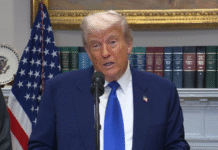MUMBAI — A recent clarification from the United States government on the applicability of H-1B visa petitions has helped ease concerns about the asset quality of education loan portfolios held by non-banking finance companies (NBFCs), according to a Crisil report released Friday.
The sharp increase in the one-time petition fee for new H-1B visa applications, which takes effect September 21, 2025, had initially raised fears about the employability of foreign graduates, as the higher costs could discourage U.S. employers from hiring international workers. The U.S. remains the largest destination for Indian students, and about 46 percent of the outstanding education loan book of NBFCs is linked to the American market as of June 30, 2025, the report noted.
However, the U.S. government has clarified that the increased one-time fee applies only to new H-1B petitions filed for candidates outside the United States and does not affect students already in the country transitioning from an F-1 student visa to an H-1B work visa.
Crisil Ratings Director Malvika Bhotika said this clarification substantially reduces risks for NBFCs. “The recent clarification indicates that the increased H-1B visa fee does not apply to students who are already in the U.S. Additionally, these students can still work in the U.S. for up to three years on an F-1 visa after completing their course under the Optional Practical Training (OPT) programme. This significantly mitigates concerns over future employability of these students and allays asset quality fears over existing loan portfolios of NBFCs in the education loan sector,” she said.
Despite the relief, the report cautioned that U.S. policy uncertainty continues to pose long-term risks. Crisil highlighted that potential restrictions on the OPT programme, which allows foreign students to work temporarily after graduation, could pressure NBFC loan performance if employment opportunities decline.
Around 85 percent of the overall education loan portfolio remains under contractual moratorium, with EMI payments yet to begin. For the U.S.-linked portfolio, about one-third is expected to become EMI-paying by the end of fiscal 2026. As repayment phases expand, Crisil warned that any adverse policy shifts affecting job prospects could directly impact loan recovery.
So far, the education loan portfolios of NBFCs have remained stable, with the 90 days past due (dpd) ratio at just 0.2 percent as of June 30, 2025. Even for the EMI-paying portion, the 90+ dpd level remains low at roughly 1 percent, indicating healthy repayment behavior.
Meanwhile, growing uncertainty around U.S. immigration and employment policies has prompted students to explore alternative destinations for higher education. The U.S. share in incremental education loan disbursements fell sharply to 15 percent in the first quarter of the current fiscal year, compared with 36 percent in FY2025 and 55 percent in FY2024, the report said.
Crisil added that NBFCs are actively diversifying their portfolios geographically to reduce dependence on the U.S. market while continuing to monitor policy developments closely. (Source: IANS)













